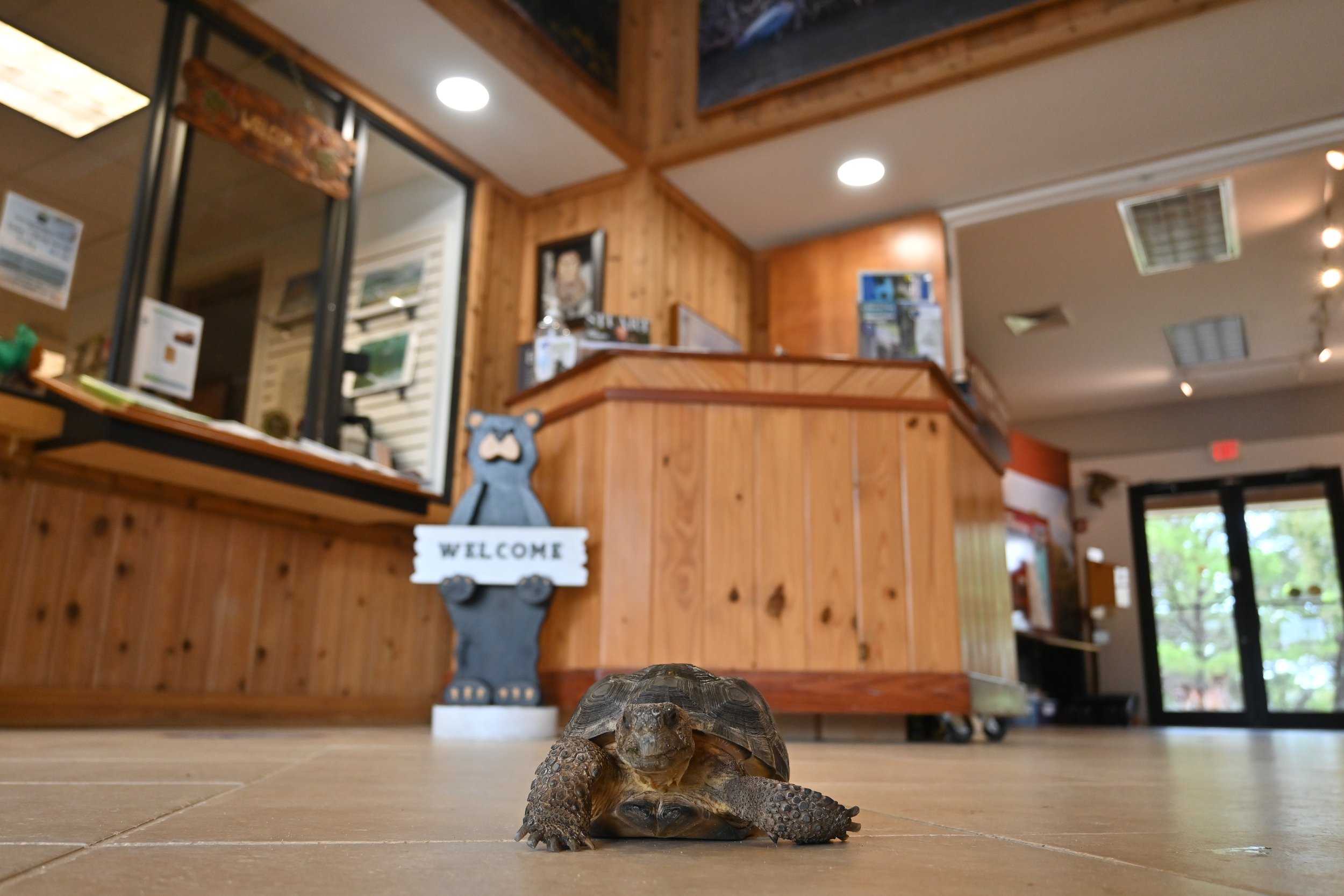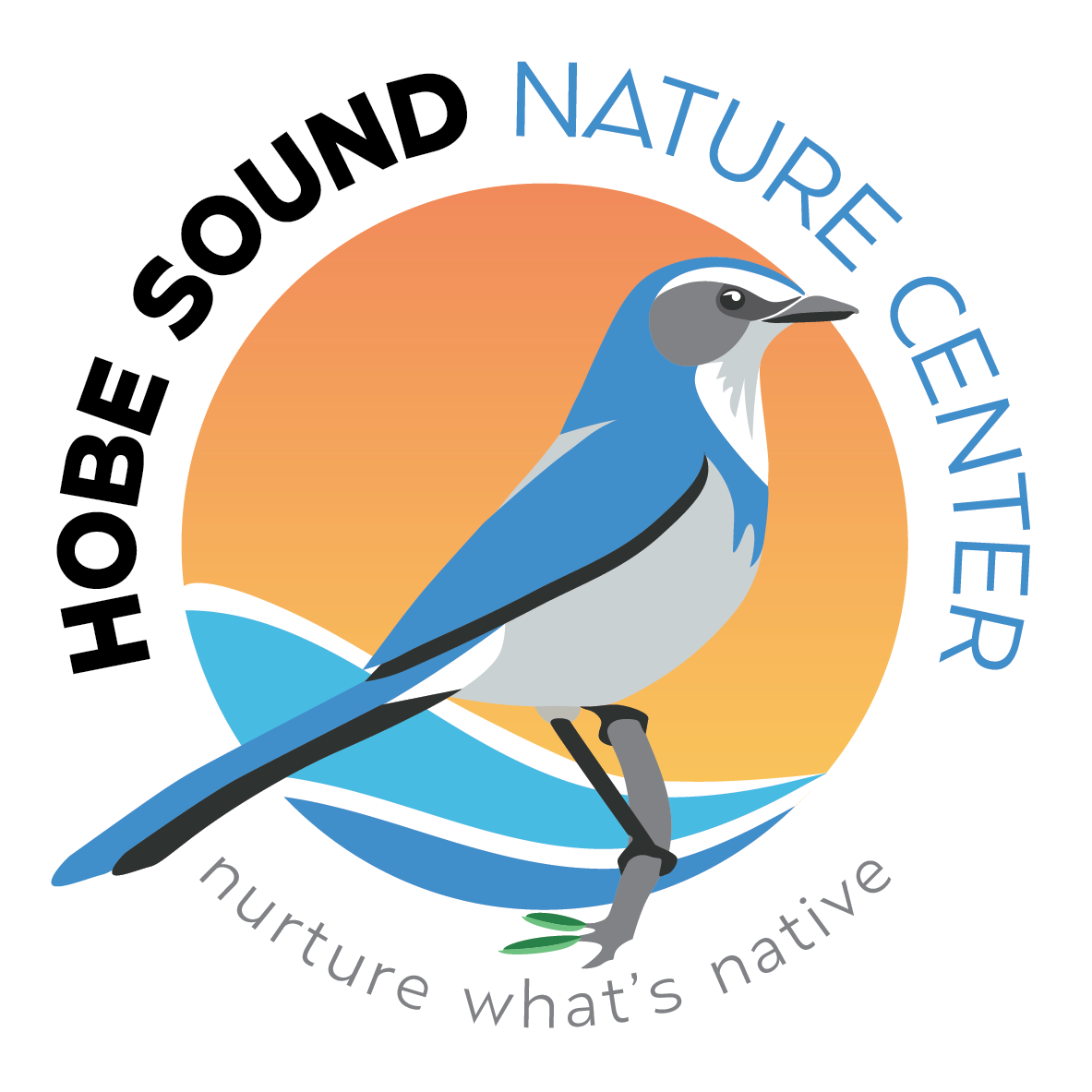
Inspiring conservation through education
The Nature Center and Wildlife Refuge
The wildlife refuge was established in 1969 when generous residents of Jupiter Island donated over 1,000 acres to the United States Fish and Wildlife Service, resulting in two, separate tracts of land that represent the refuge, separated by the Indian River Lagoon. The largest tract is a barrier island beach, located on the north end of Jupiter Island, and the other tract encompasses a 300 acre sand pine scrub, where the refuge and Nature Center offices and headquarters are located.
The name of the refuge officially changed to the Nathaniel P. Reed Hobe Sound National Wildlife Refuge in January 2019 to honor the lasting and lifetime legacy of Nathaniel Pryor Reed, who passed away in 2018. Considered a visionary, Nathaniel dedicated his life to protecting Florida’s fragile natural resources. The Fish and Wildlife Service manages the land, working tirelessly to protect and conserve South Florida’s unique, native habitats and wildlife.
The Refuge Habitat
Barrier Island Beach
The refuge beach encompasses three and one-half miles of barrier island habitat. The beach is one of the most productive sea turtle nesting areas in the United States, with the endangered leatherback, green, and threatened loggerhead sea turtle visiting the beach annually to build their nests and lay their eggs.
Estuarine Lagoon
The Refuge Headquarters and Hobe Sound Nature Center borders the Indian River Lagoon, which is one of the most biodiverse estuaries in the nation. The estuary provides food and critical shelter for threatened manatees, as well as many birds, including brown pelicans, ospreys, least terns, and various shore and wading birds.
Sand Pine Scrub
The sand pine scrub habitat, preserved between the U.S. 1 corridor and the Indian River Lagoon, is Florida's oldest and most endangered habitat. It is home to many vanishing plant and animal species, including Florida scrub-jays, gopher tortoises, indigo snakes, four-petaled pawpaws, and dancing lady orchids.
A Growth Mindset
The Elizabeth W. Kirby Interpretive Center opened to the public in 1985, featuring estuary, sand pine scrub, manatee, and sea turtle exhibits, as well as various hands-on activities. After losing an entire building to the hurricanes of 2004, the Refuge Headquarters and the Hobe Sound Nature Center moved into a new building during the summer of 2007. This is the museum we showcase today, including an exhibit hall featuring live animals, interpretive exhibits, hands-on activities, the Owl’s Roost gift shop, and staff offices. The new Education Classroom opened in September 2022 has seating for up to 60 people. Both buildings are handicap accessible.
The Friends of the Nature Center help support and promote the mission of the Hobe Sound Nature Center. Membership entitles you to take an active role in our education and outreach efforts. All members receive a subscription to our quarterly newsletter, The Mangrove News, which covers the latest happenings and events at the Nature Center. Members also receive discounts in the Owls Roost gift shop, turtle walks, and summer camp programs. Joining is easy!


